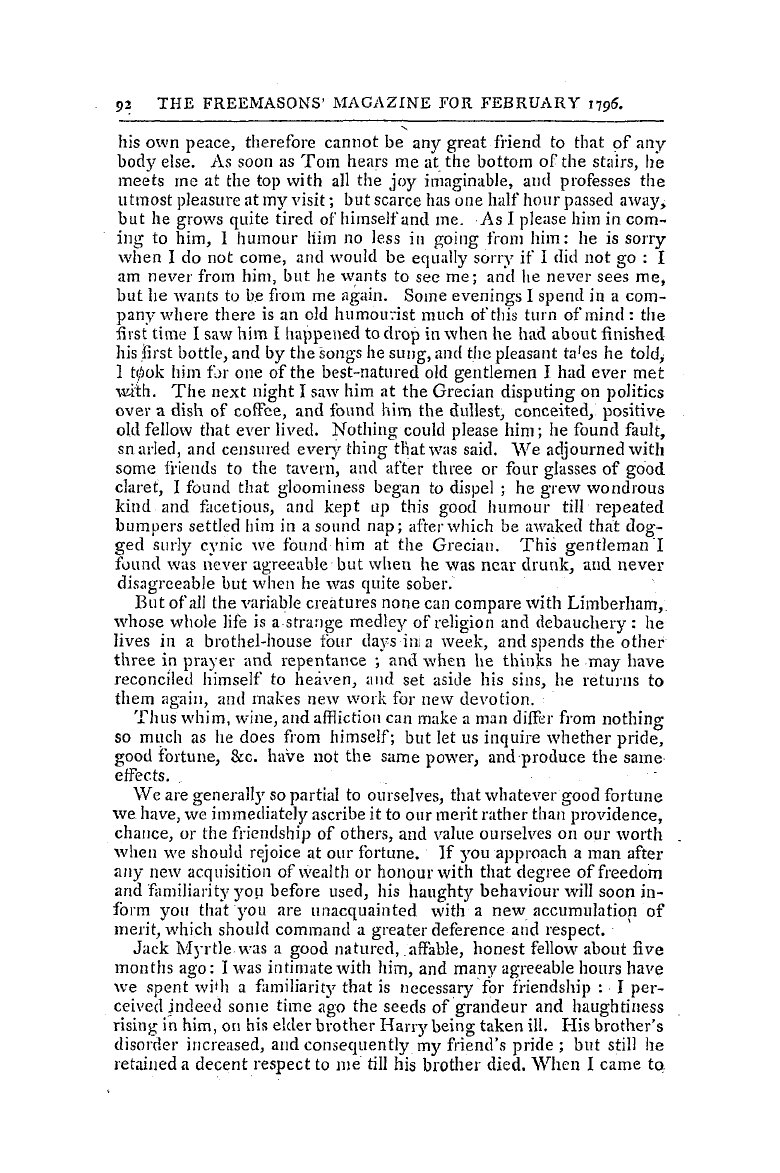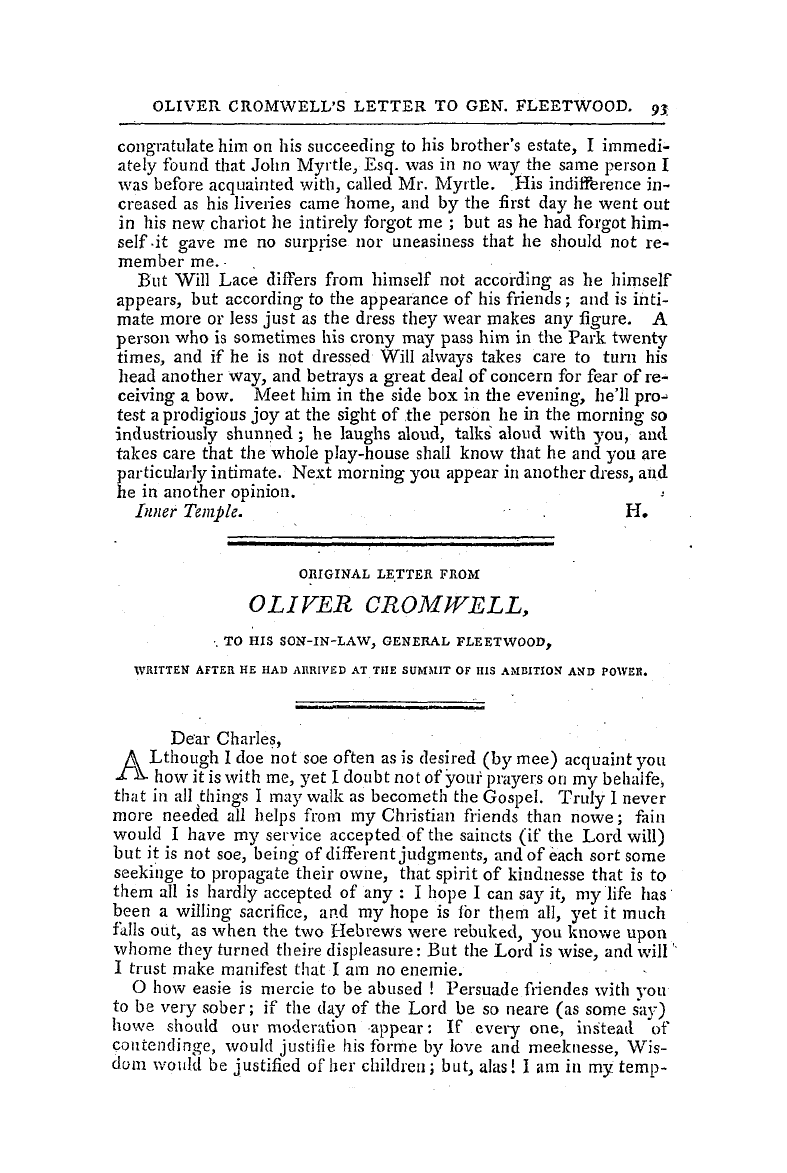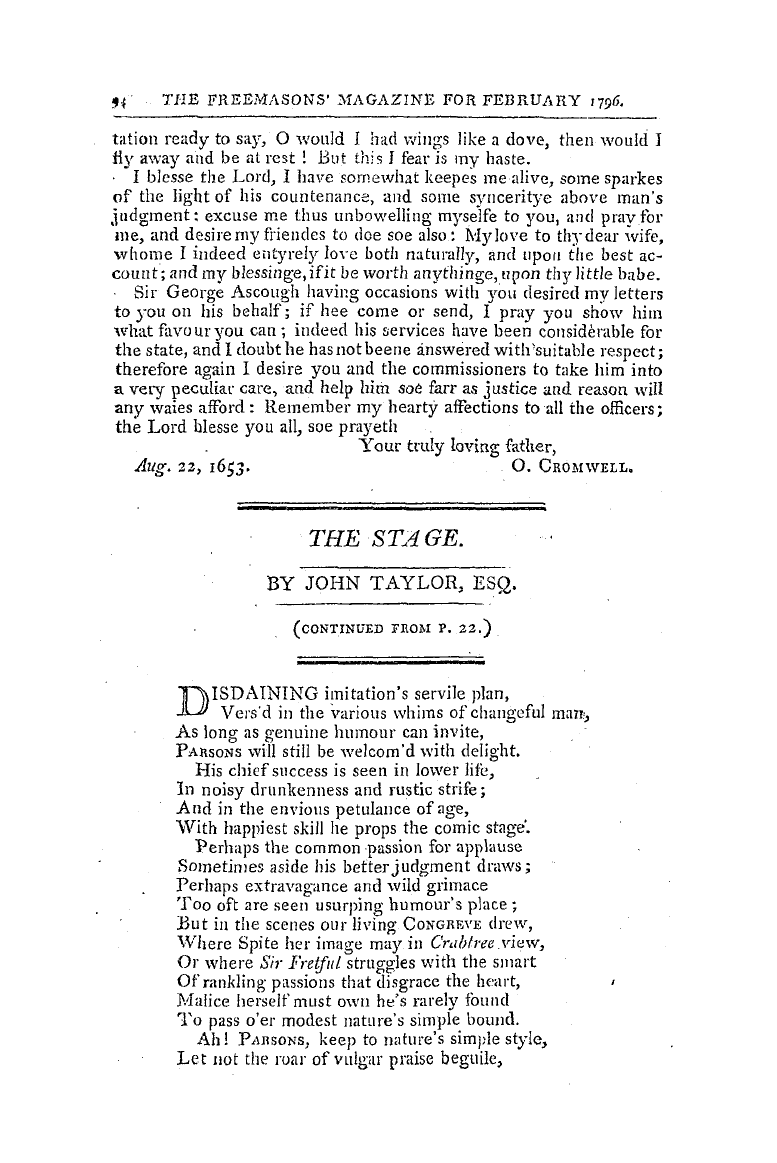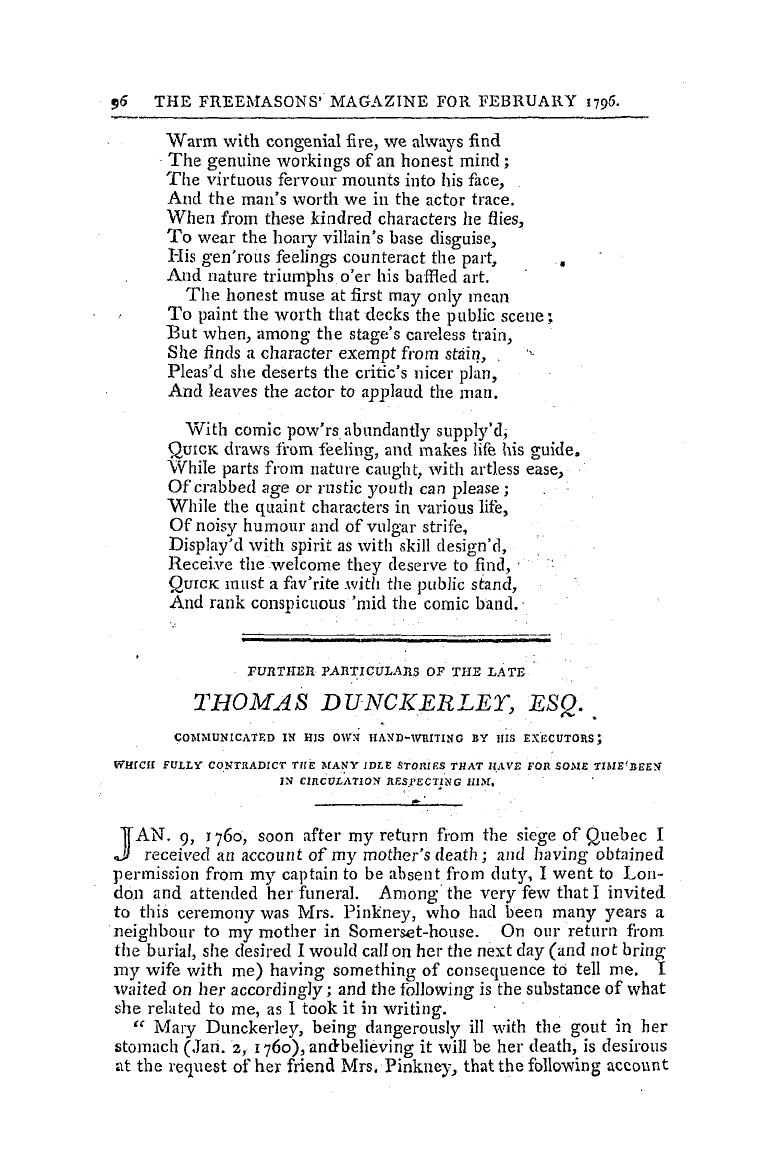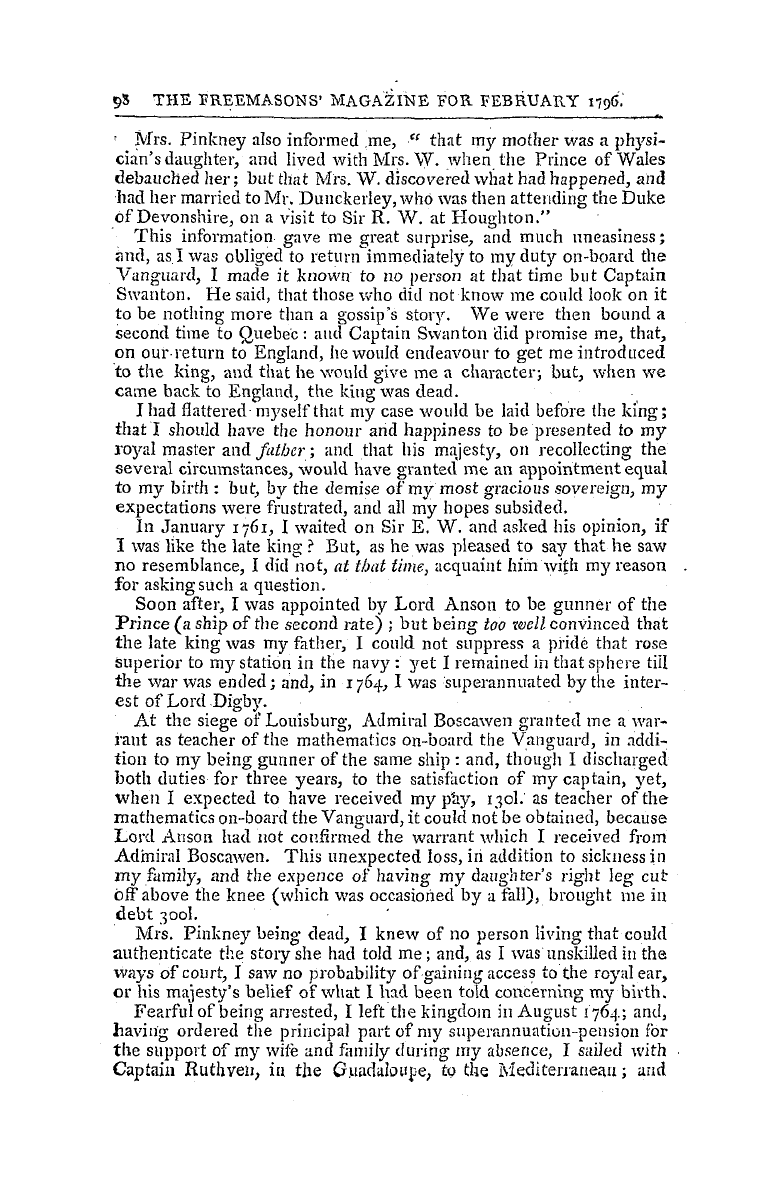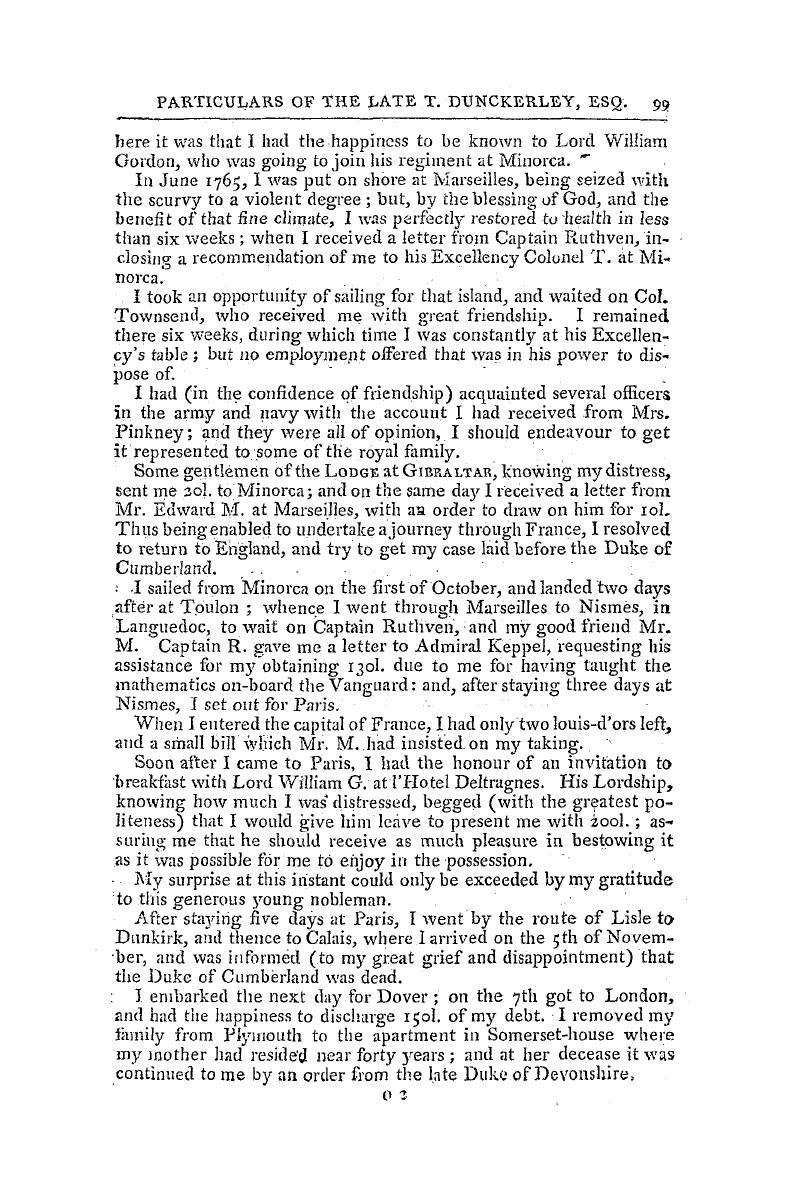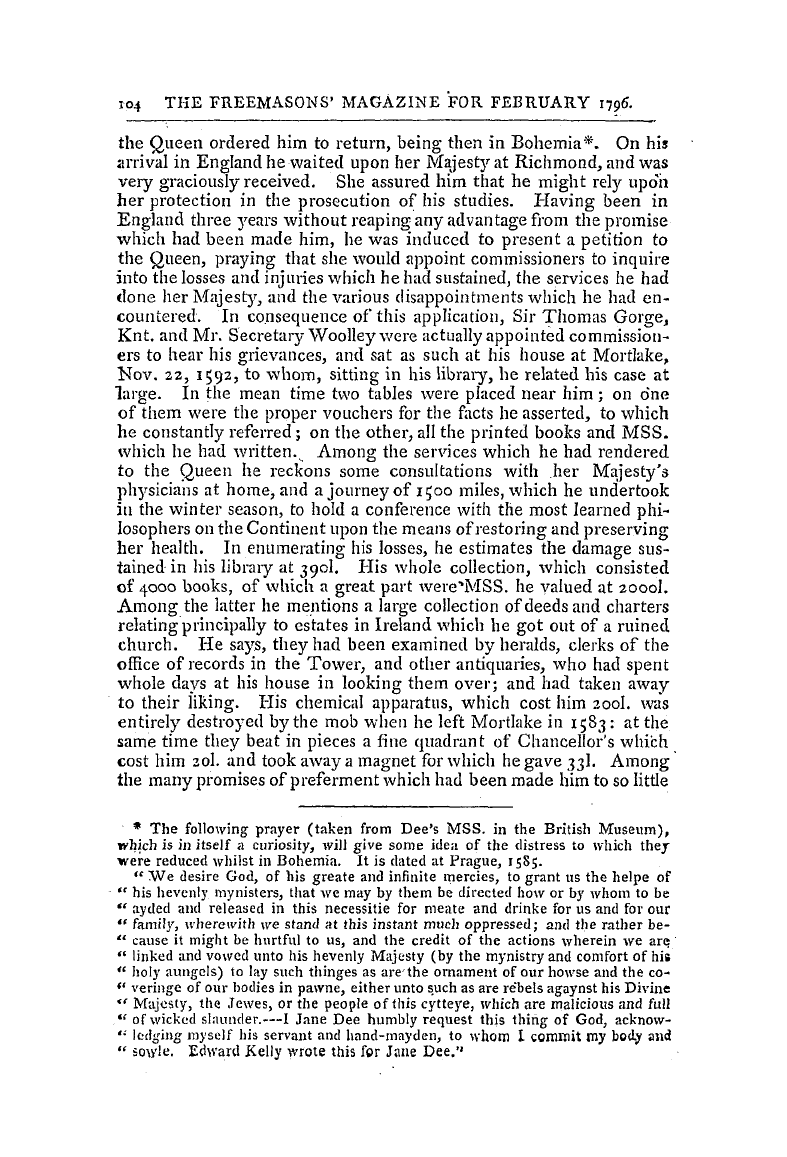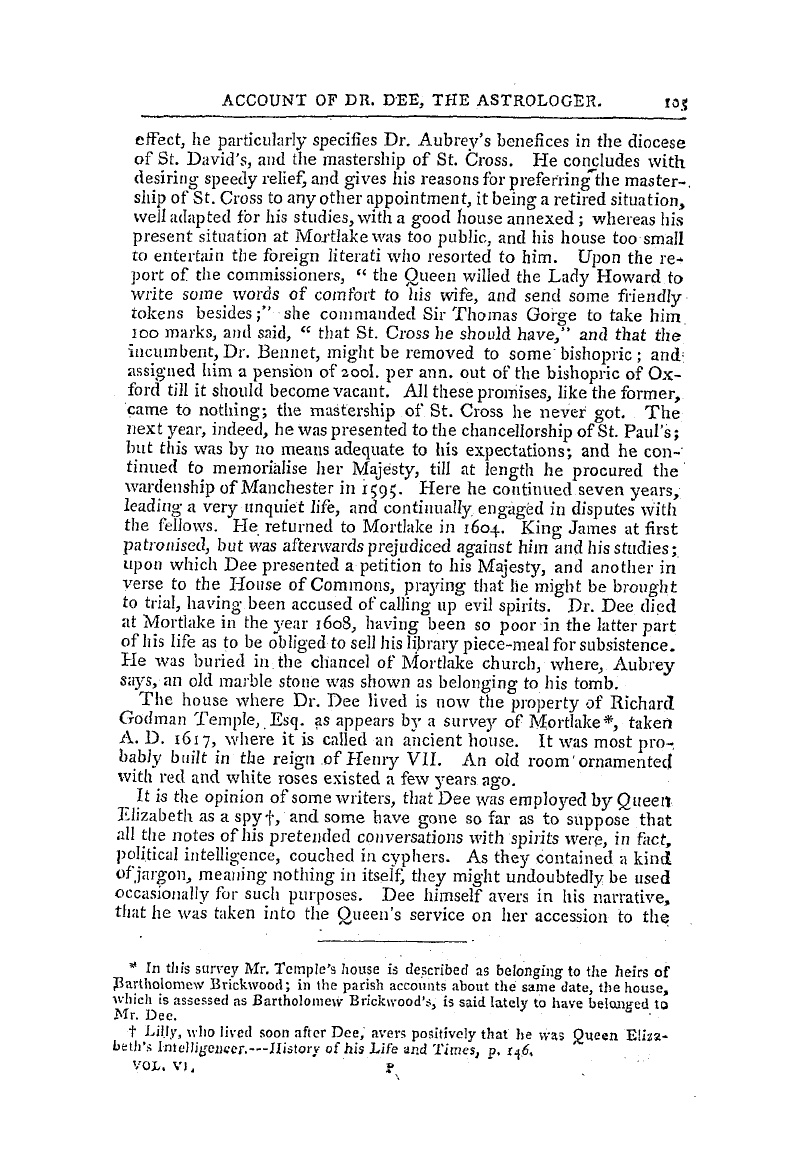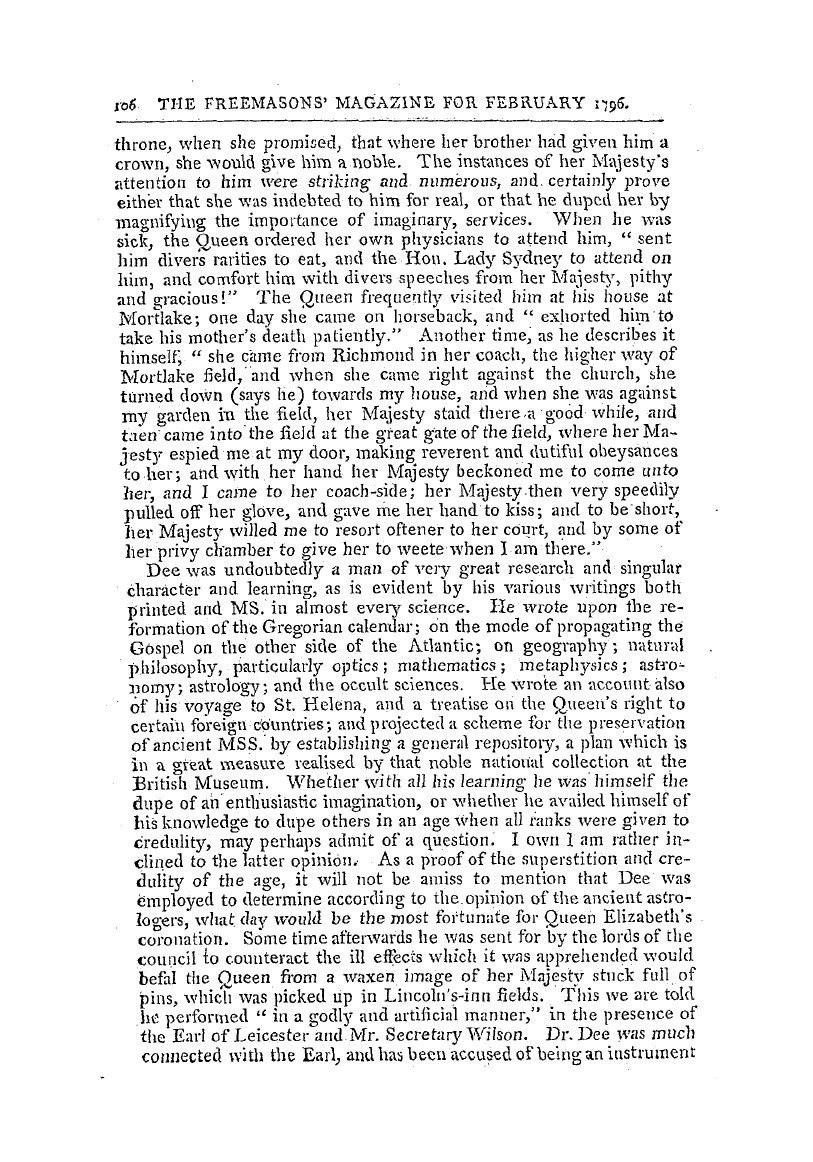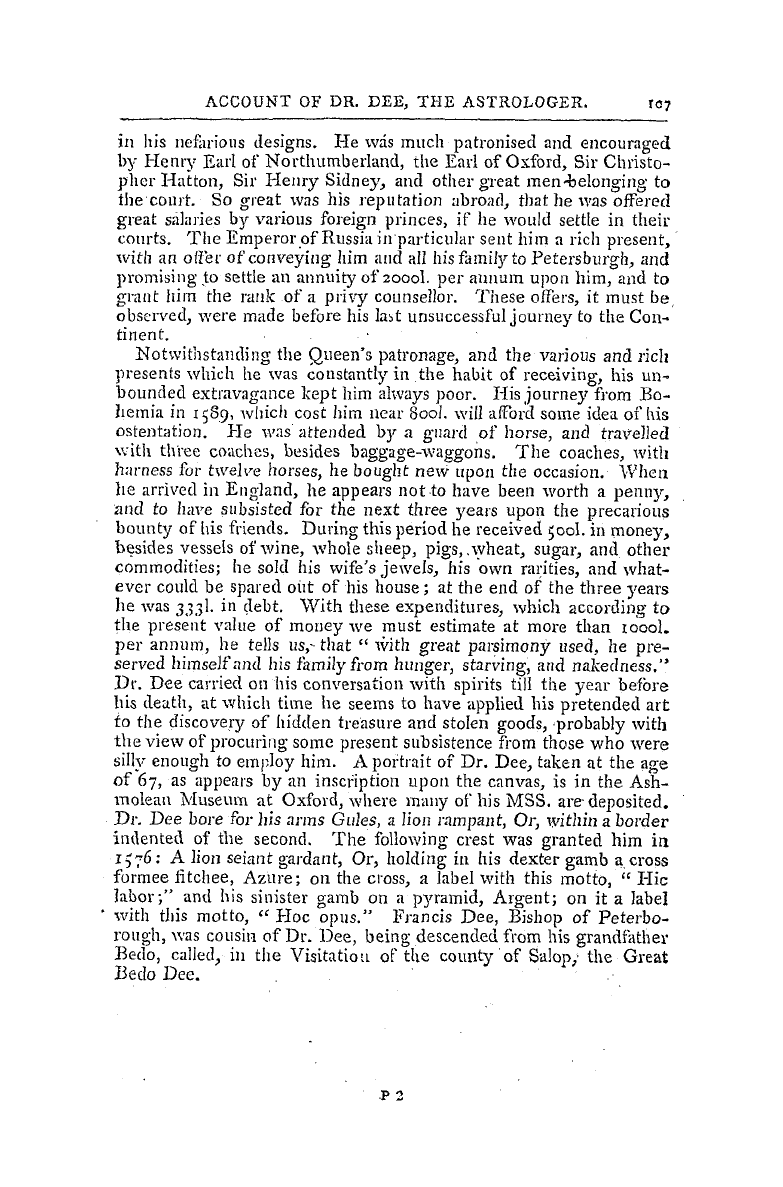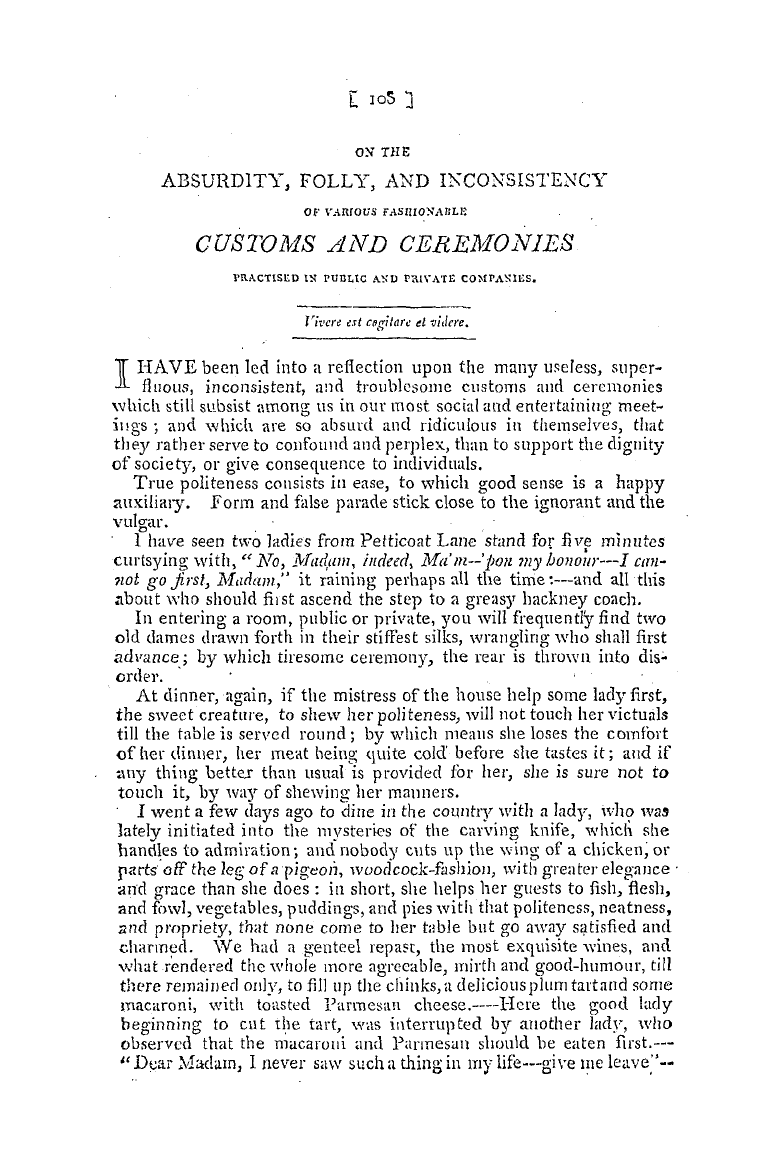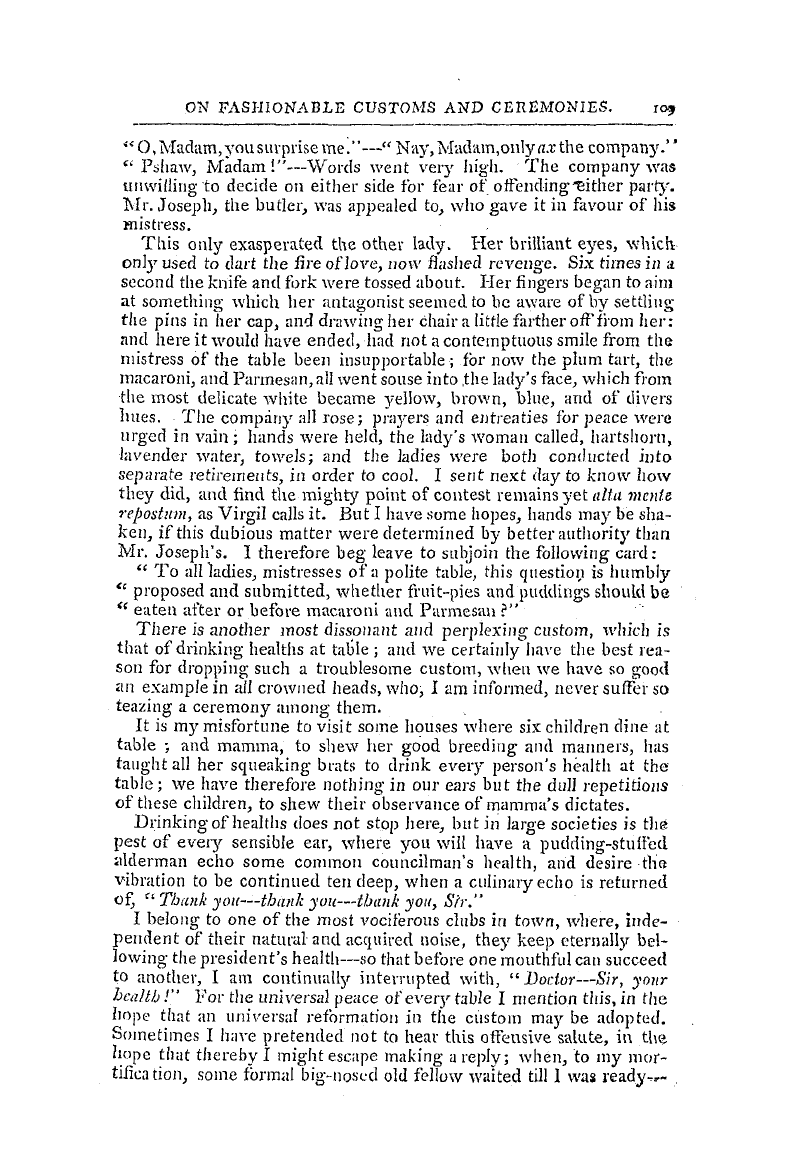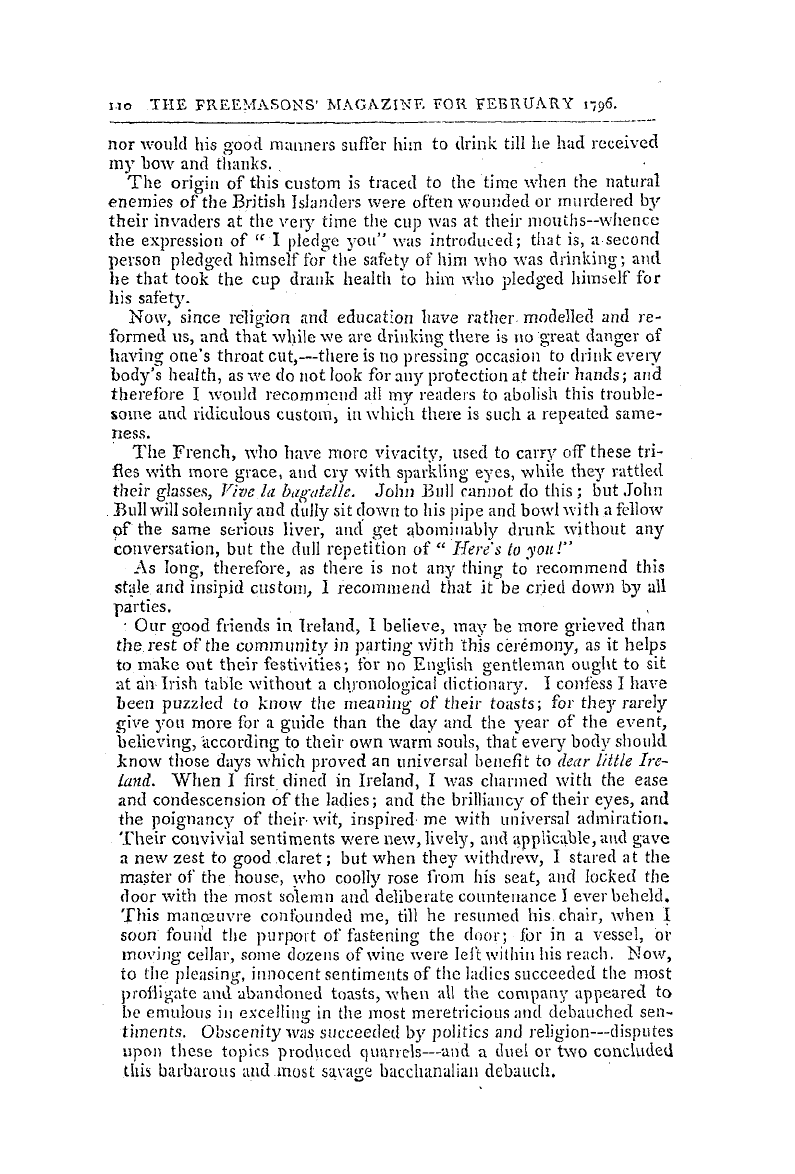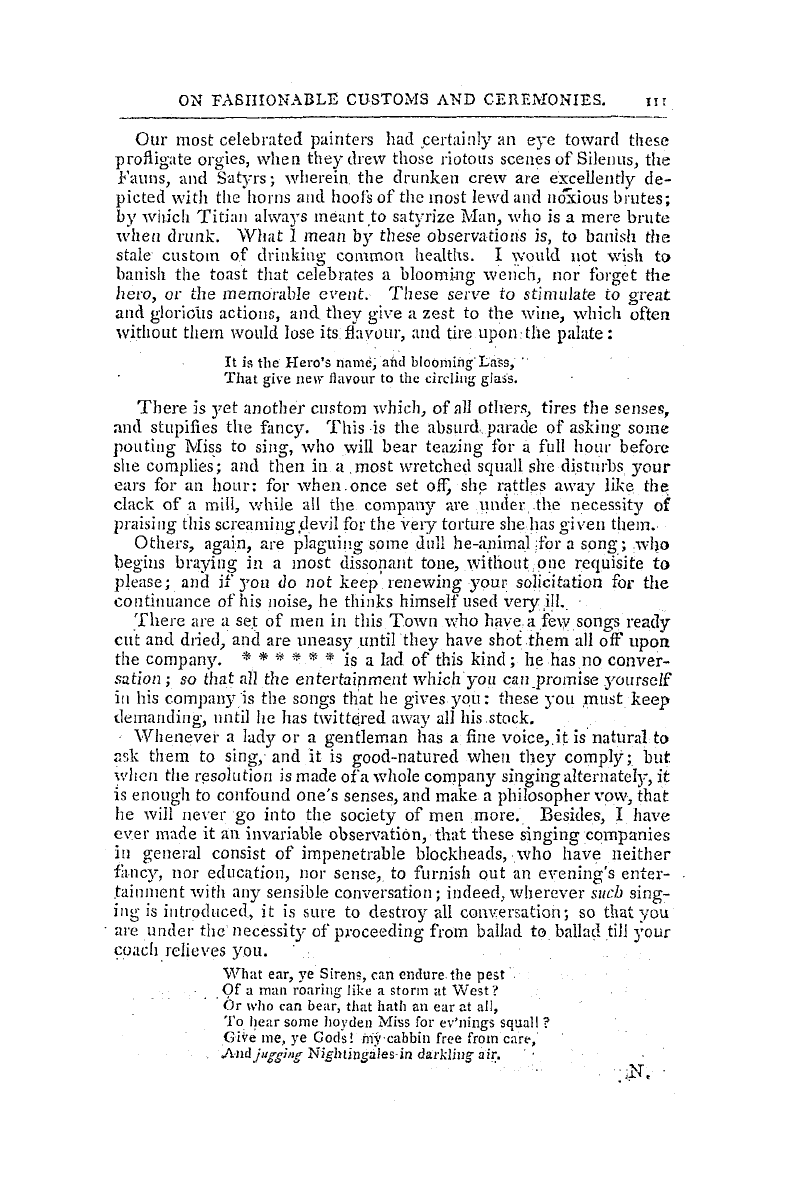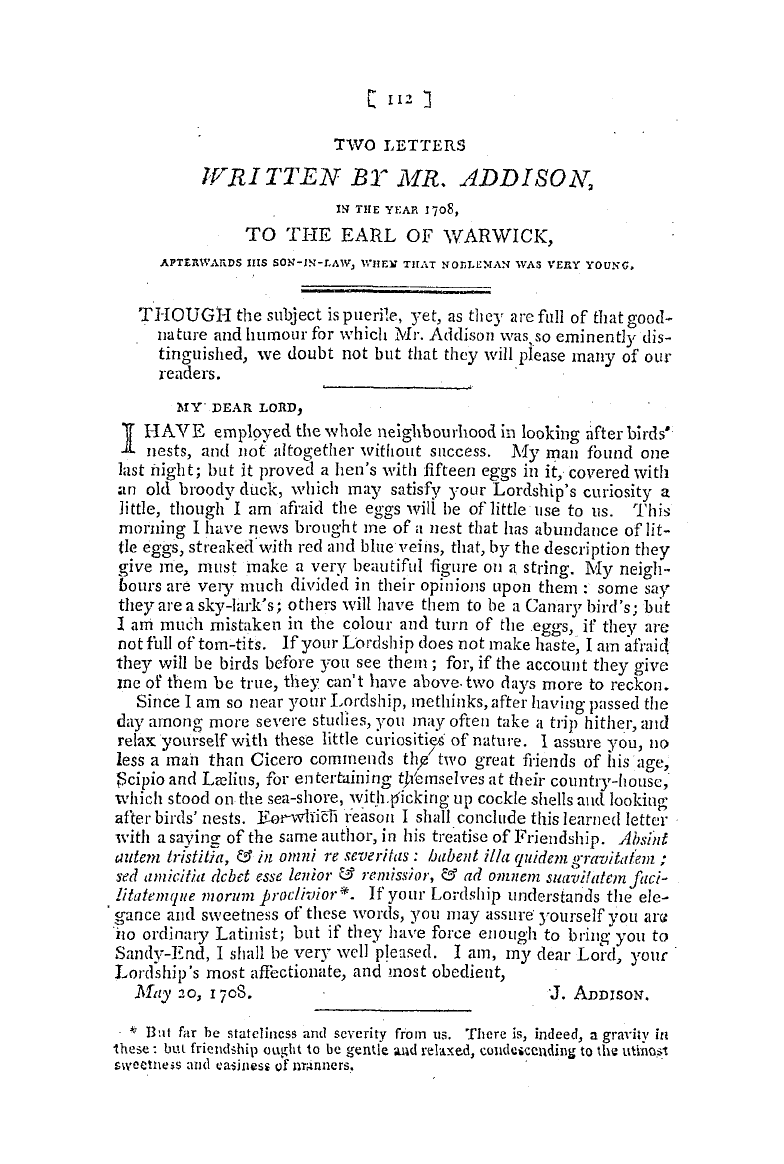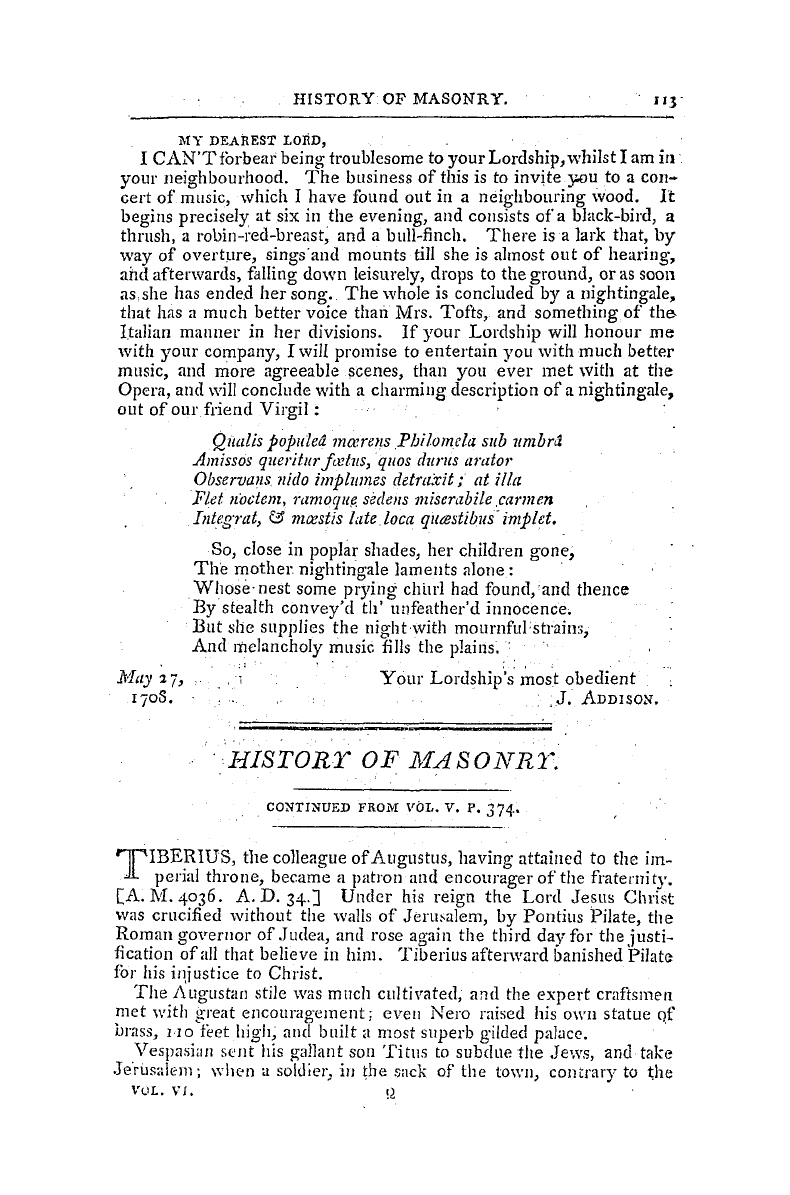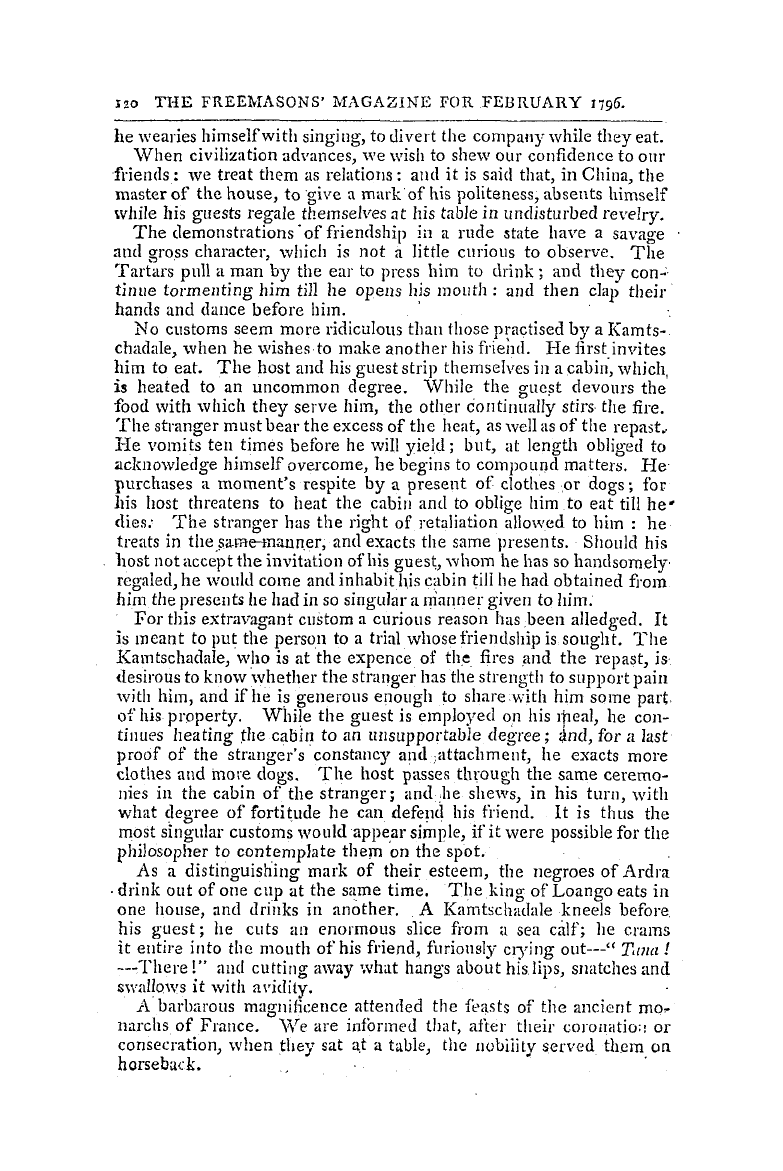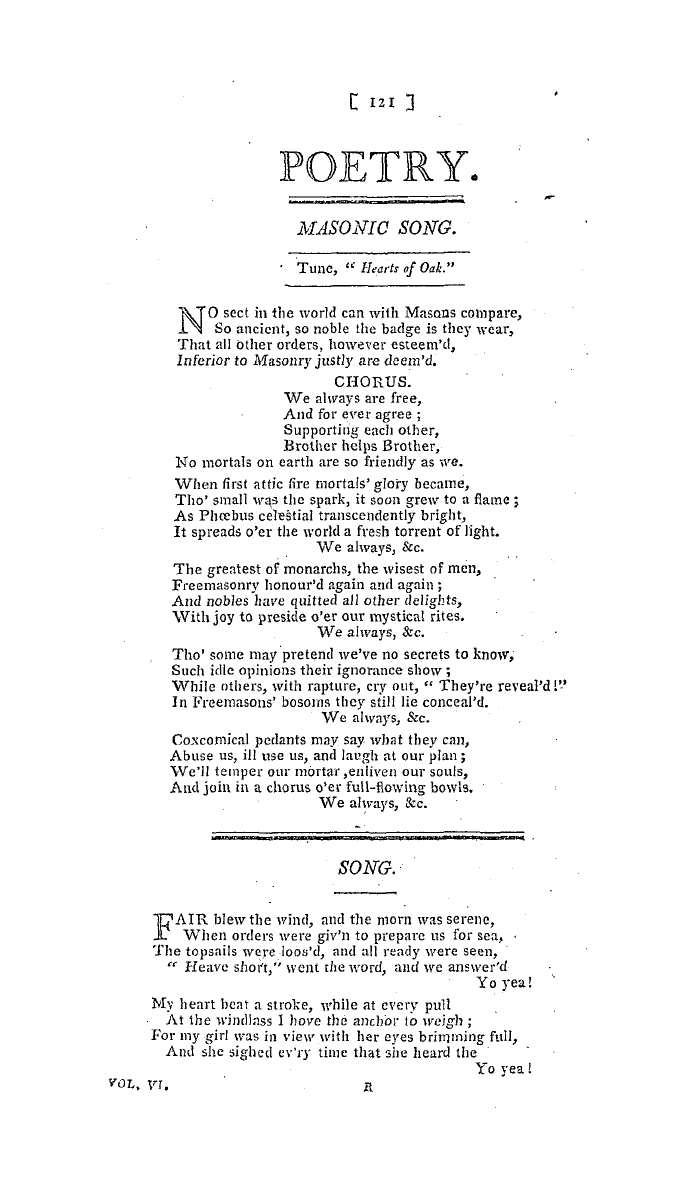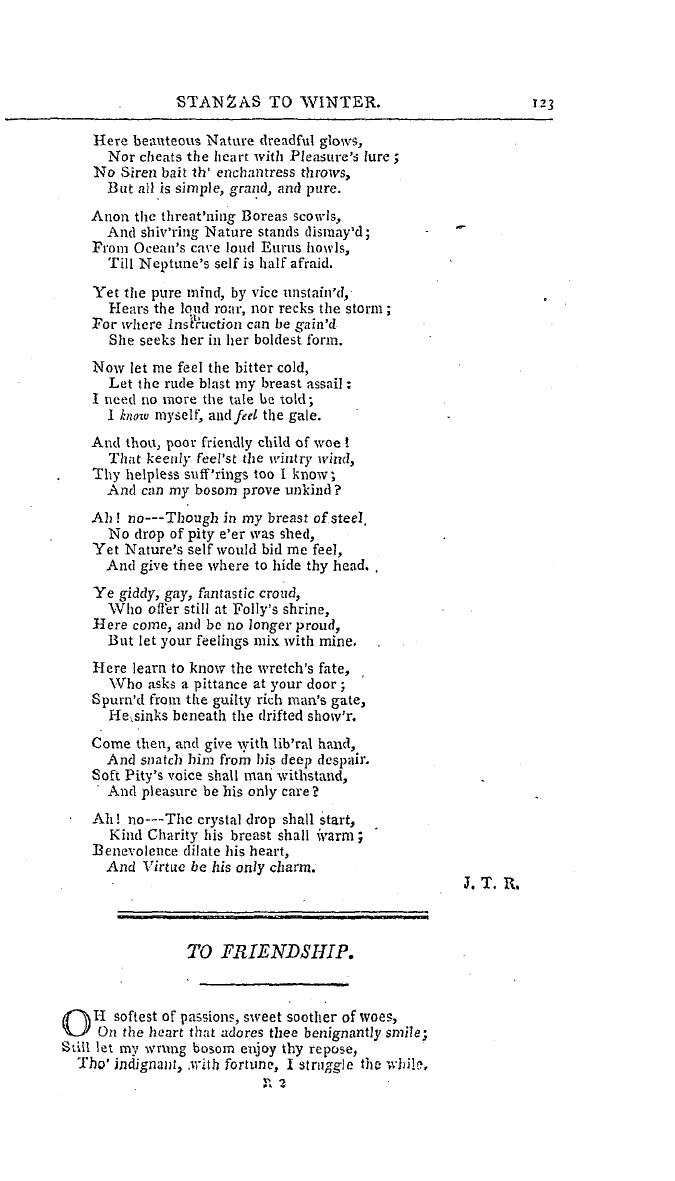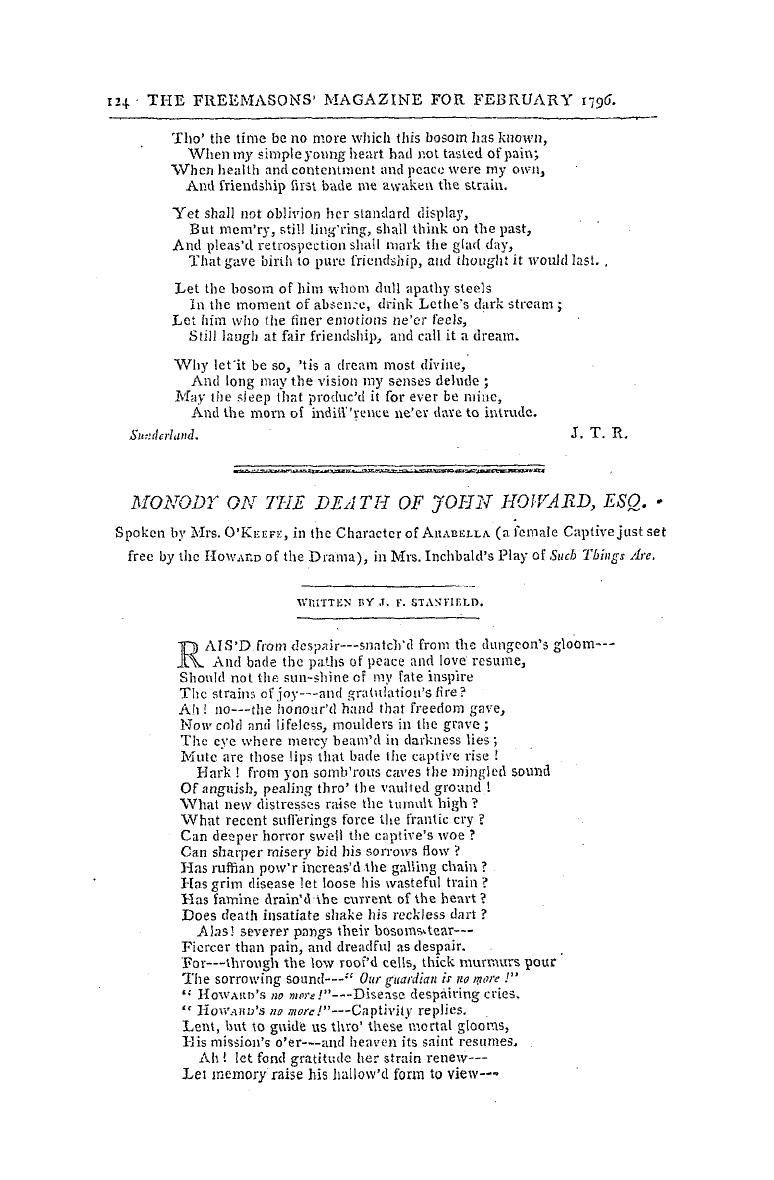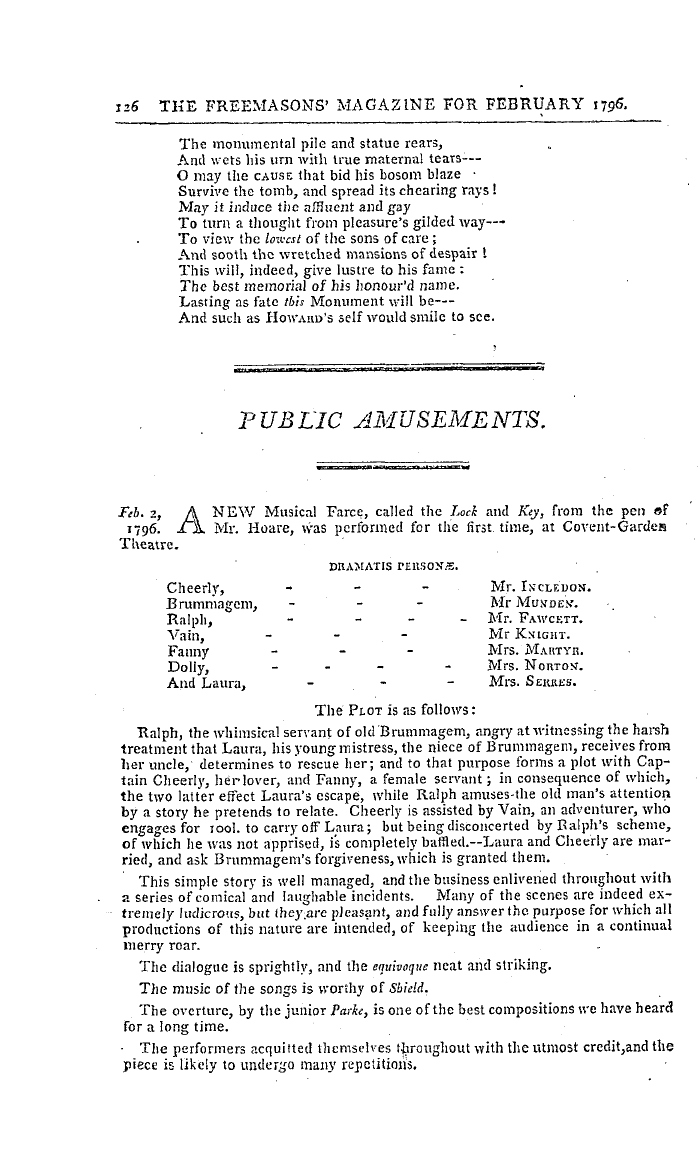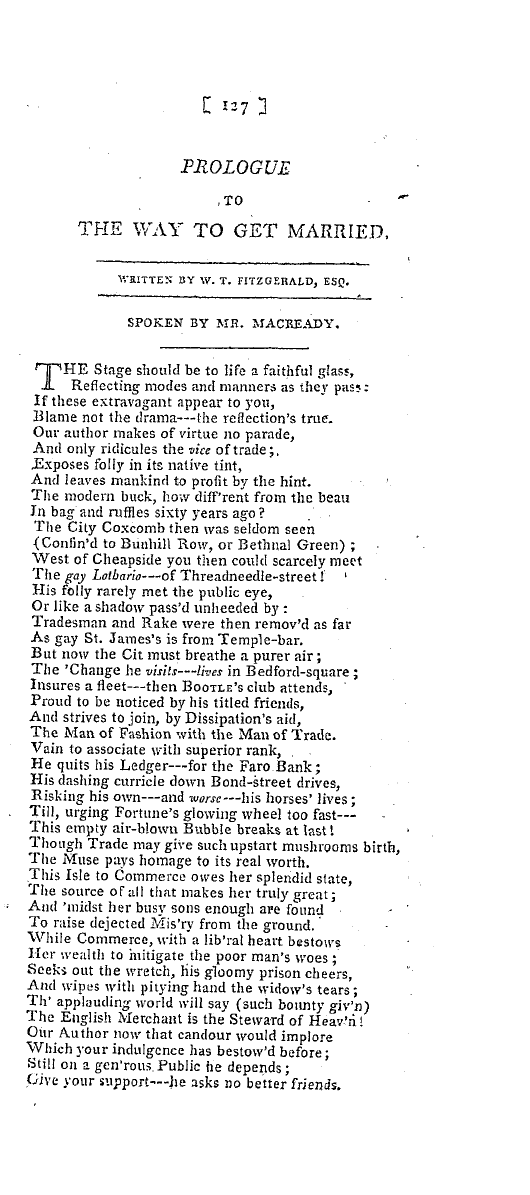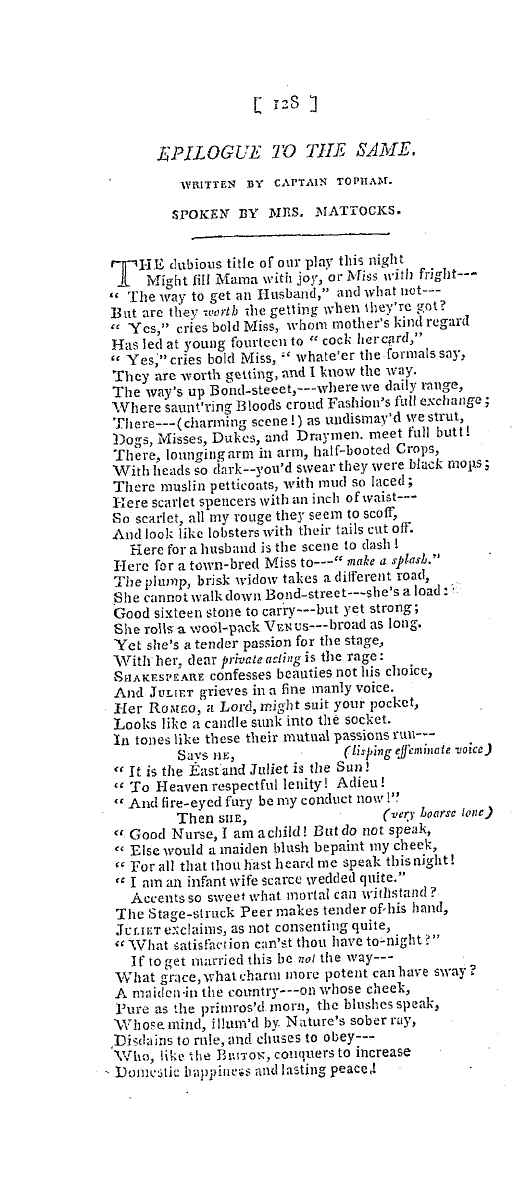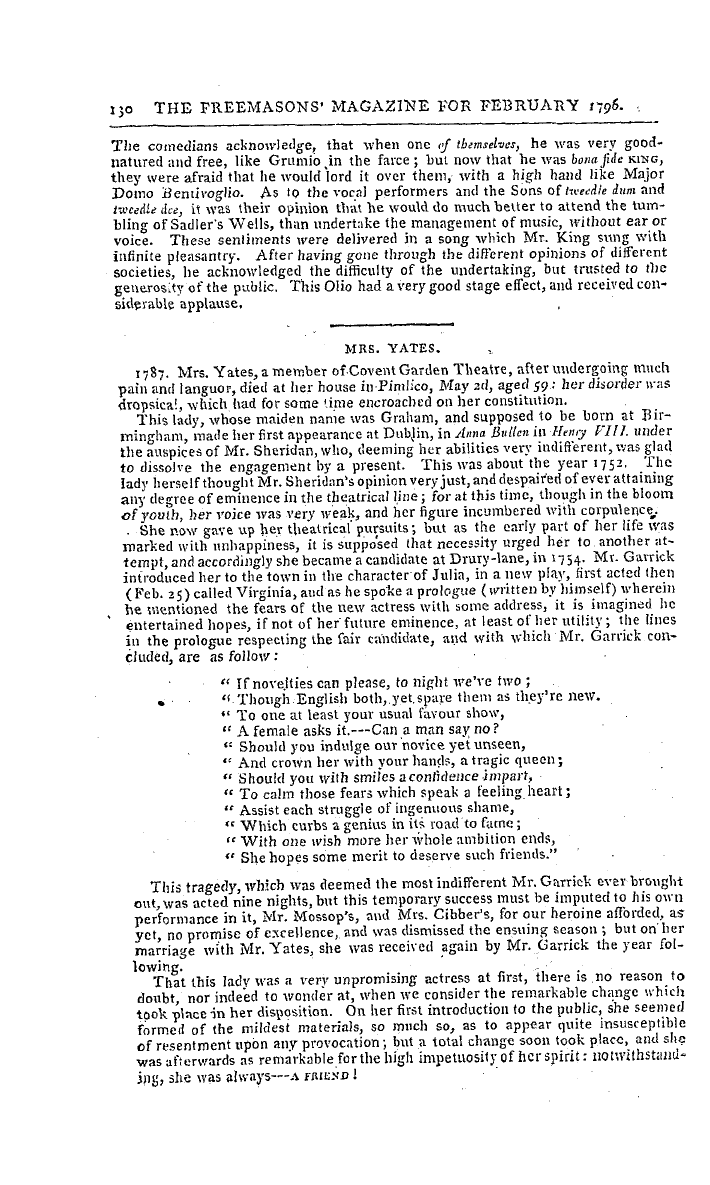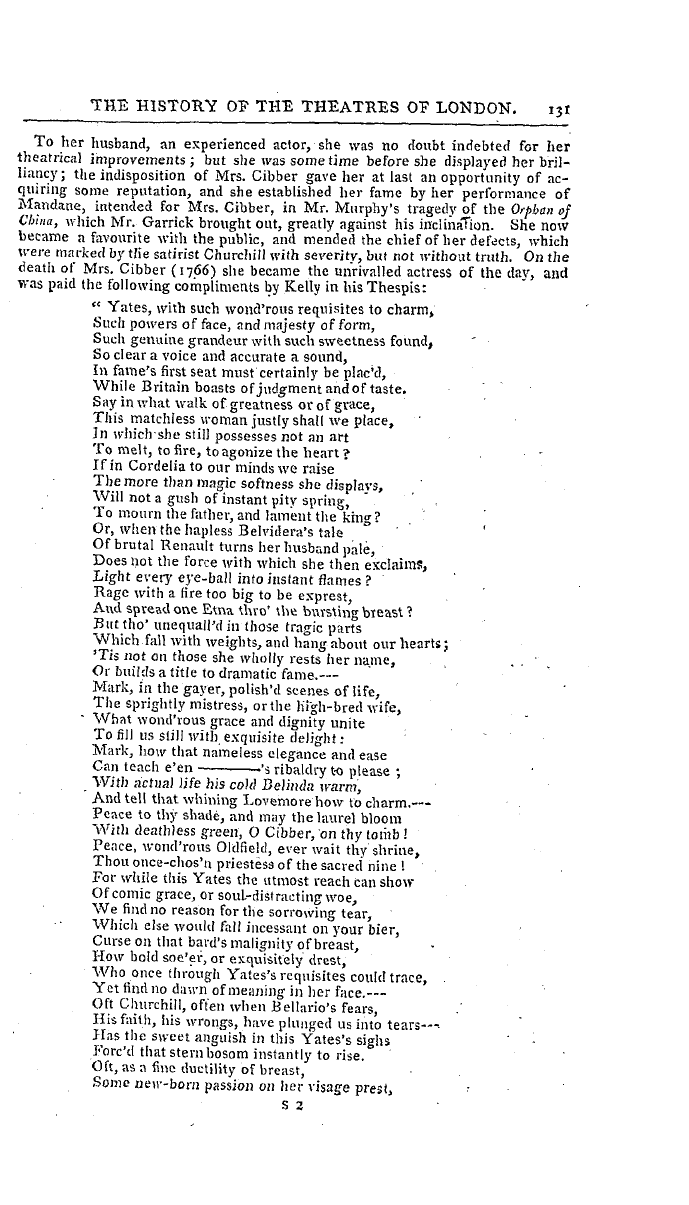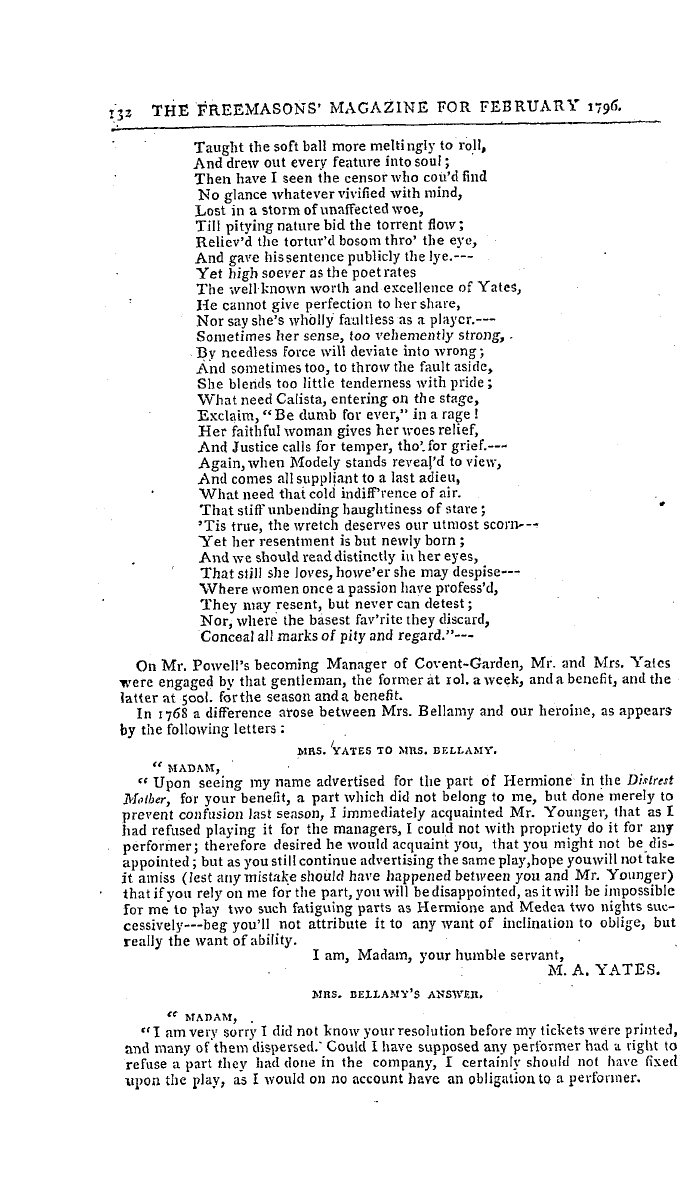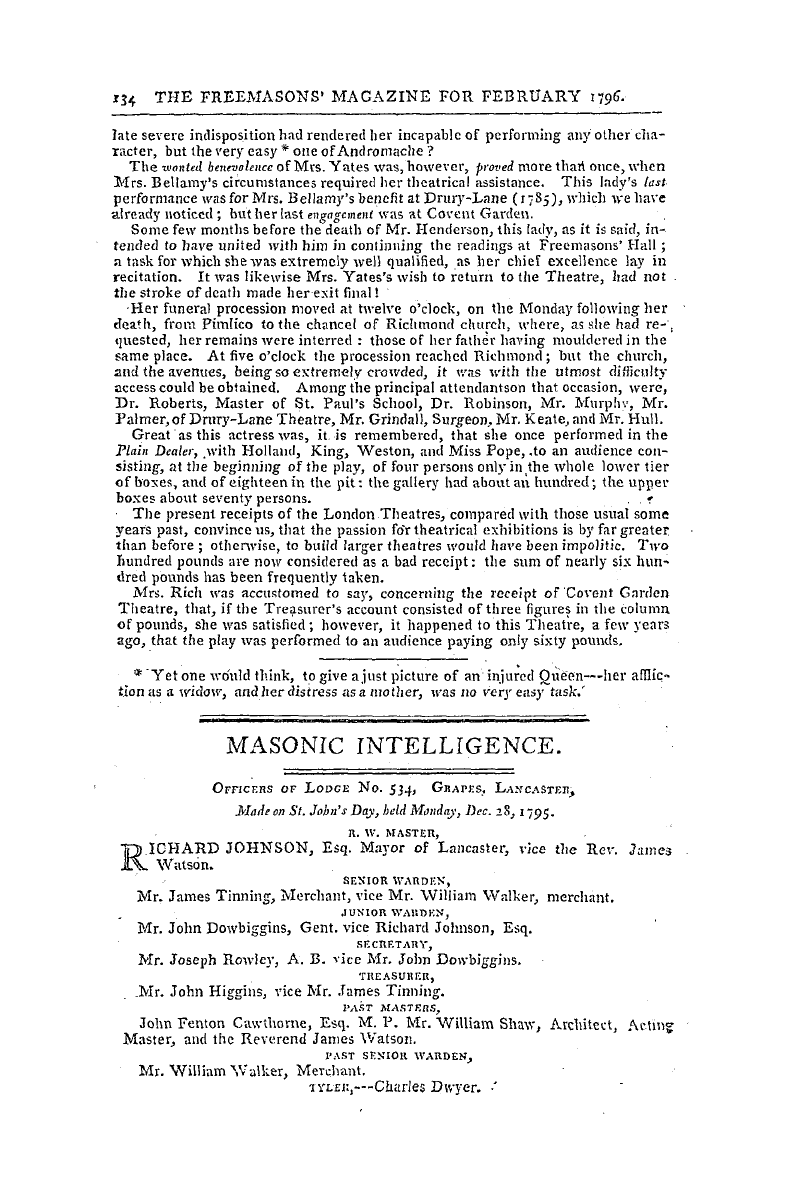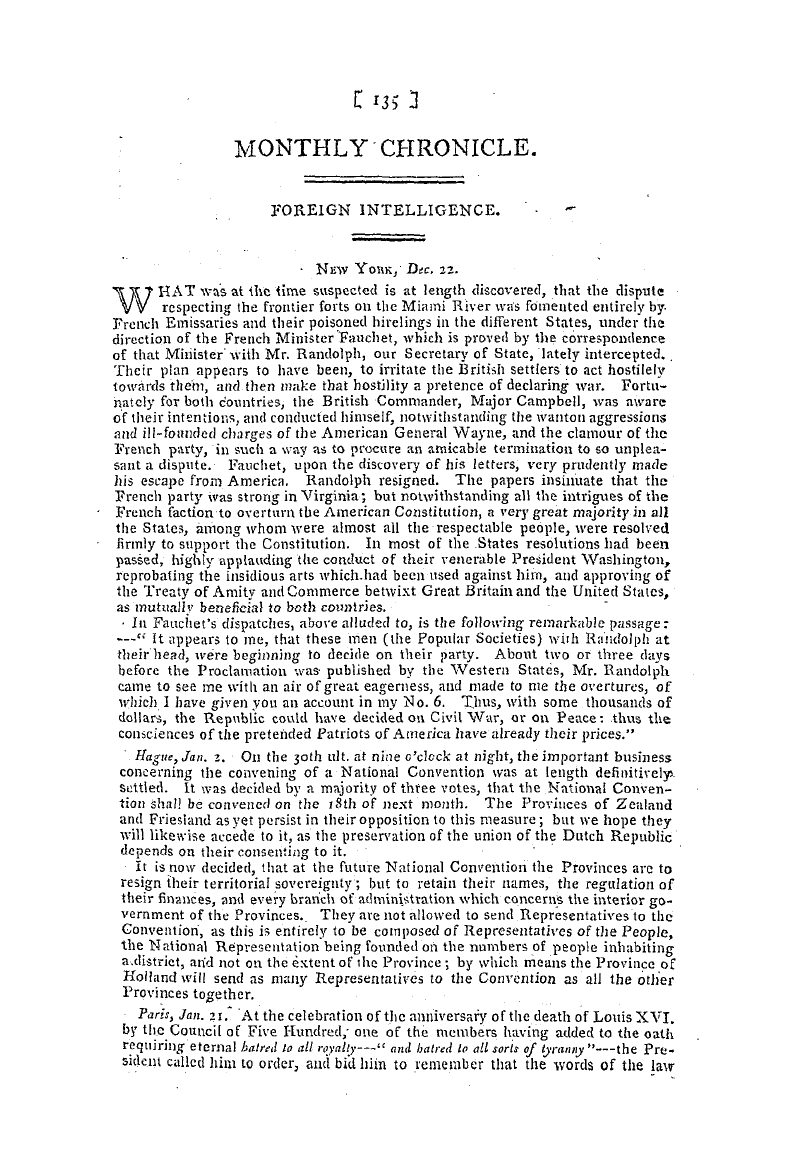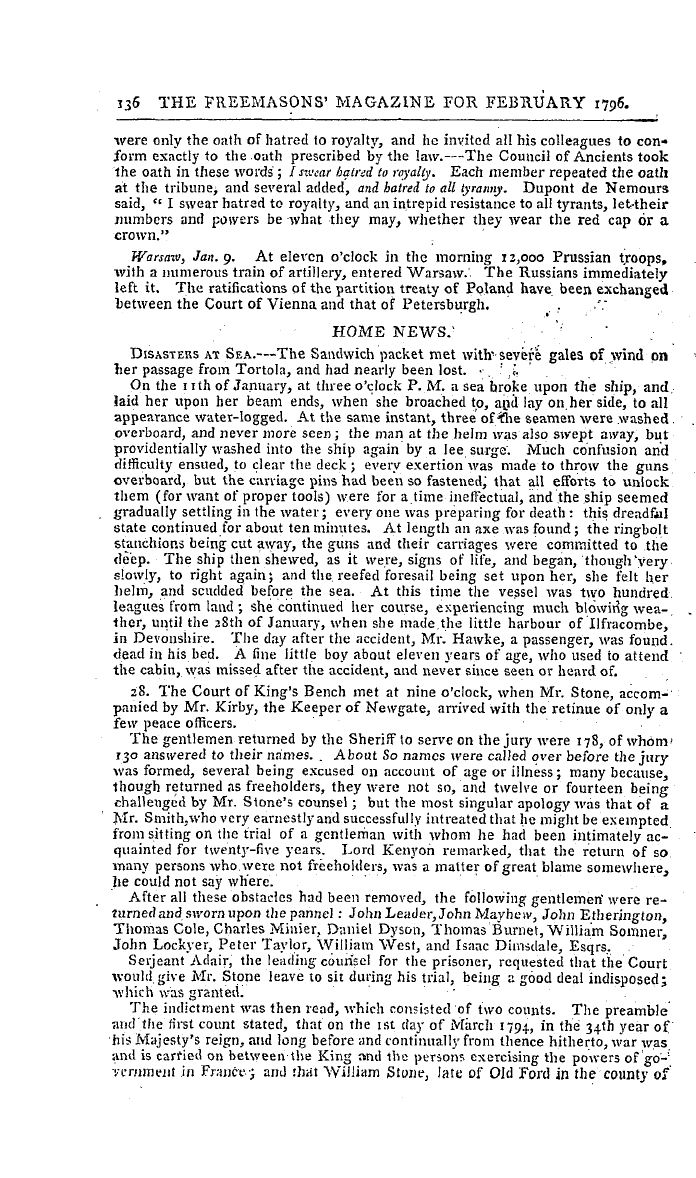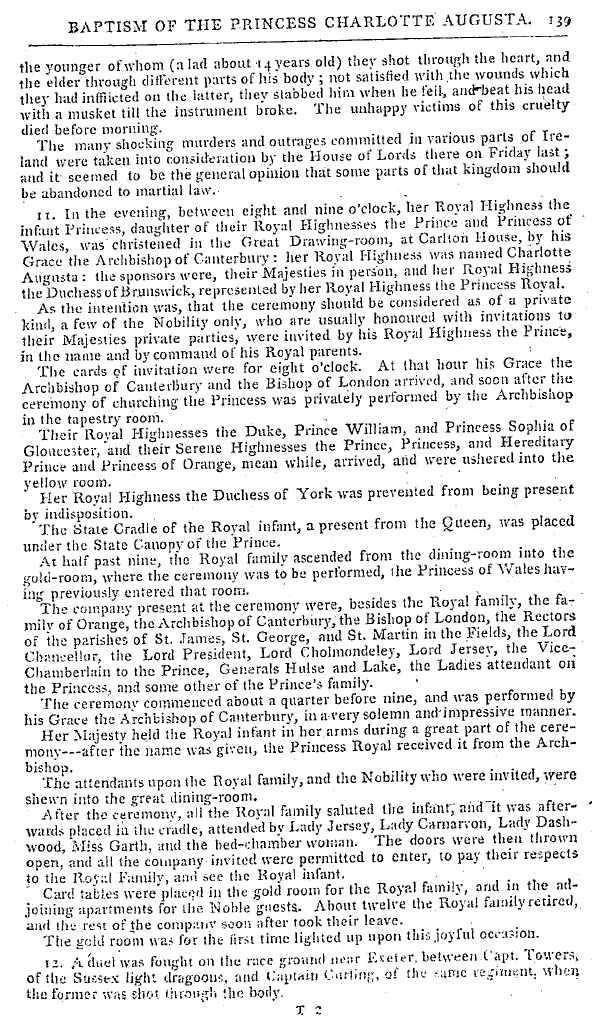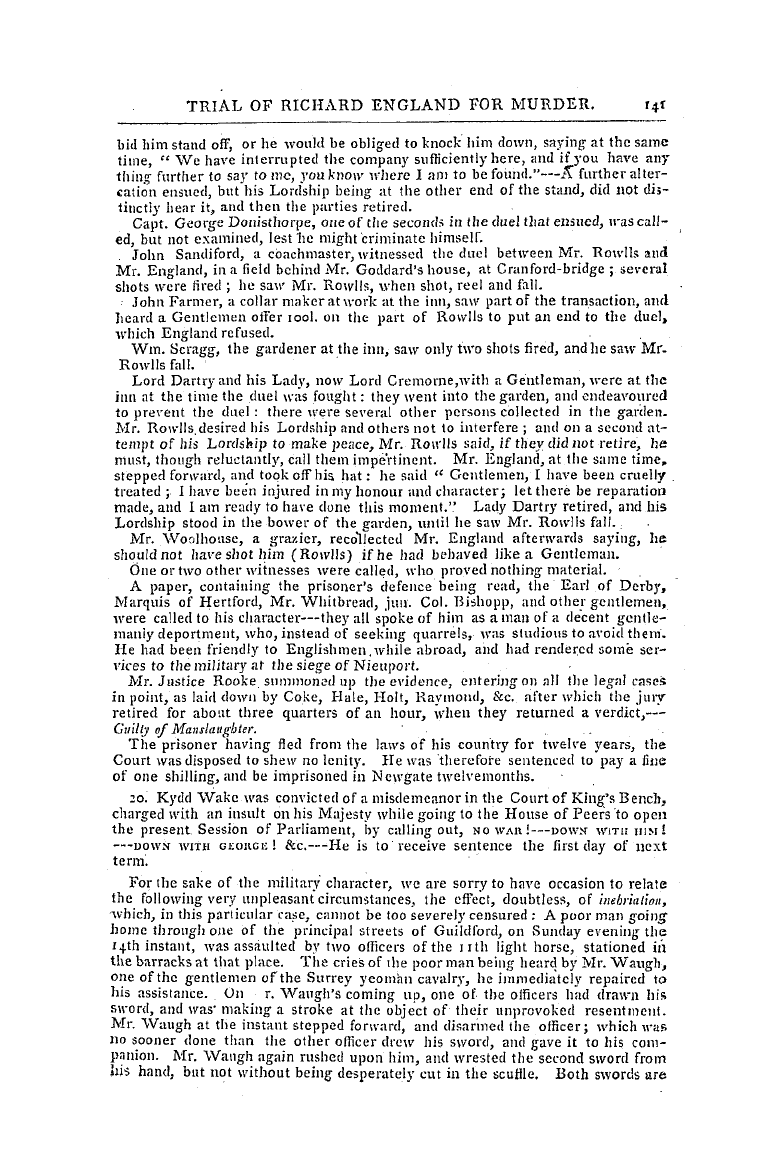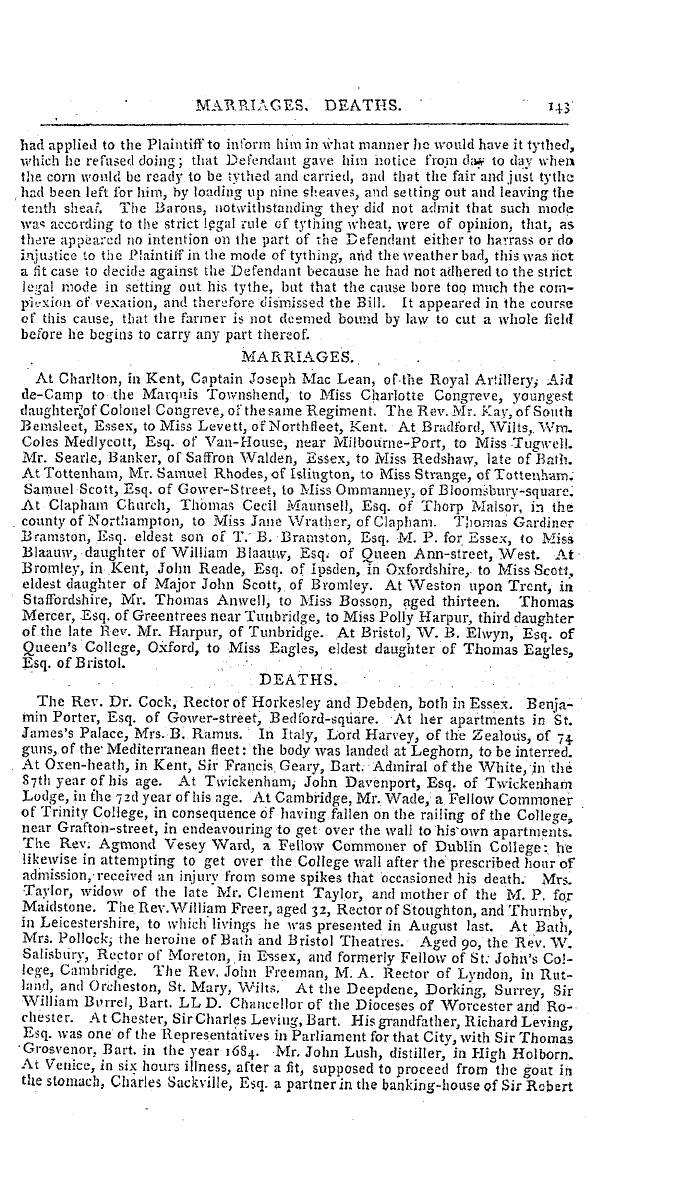-
Articles/Ads
Article HISTORY OF MASONRY. ← Page 5 of 6 →
Note: This text has been automatically extracted via Optical Character Recognition (OCR) software.
History Of Masonry.
•Authors distinguish , two . ki . nds of Gothic architecture ; ancient and modern , with respect to each , other . The ancient is that which the Goths brought with them from the north in the filth century ; and was probably no more than rude'imitations of Roman " buildings , unassisted by any knowledge -of architectonic principles . The edifices built , in this stile are exceedingly heavy and' coarse ; their characteristics arethat the walls are . very thick ; and generally without
, •buttresses ; the arches semicircular , supported by clumsy columns ; -with a kind of . regular base and capital . In short , plain solidity is the striking feature of this mode of building ; though ornament was hot whollyiinaftempted , as may be ' seen in some remains ofthe old Saxon architecture still existingin this country . •The modern Gothicoras it should rather be calledthe Arabesc
, , , , or Saracenical , was introduced about the tenth centuiy , when pilgrimages and crusades to the Ploly Land become fashionable ; for there were no people at that time known by the name of Goths . This improved stile ran into the other extreme ; being-light , delicate , and rich to . excess : witness Westminster abbey , the cathedrals of Litchfield and Salisburythe cross at Coventry & c . •This last kind
conti-, , nued long in ! use ,- especiall y in Italy ; all the old cathedrals , from the thirteenth' century to the restoration-of Grecian archit ' ecturein the sixteenth ' century , being iirthis ' stile . The markswhich constitute the character . of . the modern Gothic , are its numerous and- prominent buttresses , its . lorry-spires and : pinnacles , its large : and ramified
windows , its ornamental niches or canopies , its sculptured saints , the'delicate lace work . ofits fretted roofs , and a profusion-of roses , crosses , and other ornaments , lavished indiscriminately over the whole building . But its more peculiar characteristic is , ¦ to see lofty vaults of pointed arches raised on slender-. clustered pillar .-, which ; though they have stood fbr ages , a timid spectator is in apprehension of their tumbling every minute ! : The first of this stile in our country
. appearance , was toward-the latter-end of the reign of Henry II . and hence ' it is , that our ancient-cathedrals and churches are in the modern Gothic . About thestime : of Henry Villi it began to decline ,, being succeeded by a . morigrel ' stile , in which . the- 'Gothic and Grecian are incongruously blended together .-s •- i ¦ . ¦¦ ; ¦ ' . . ' ,:.... ' , ' I , Being . therefore :. now in possessionof sufficient- datathe '
specula-, tive mason will scarcel y be displeased at arrin vitation to pause a little ; to try if we cannot discover , the primitive ' ideas , or original models , on which architecture was founded . These Airfare the Grecian and Gothic stiles , or , which are nearly the same , the two Gothic stiles ; assuming the former of them for the rude infancy of the Grecian architectureand the latter , as a stile distinguished bpeculiar
charac-, y teristics : The . trunk . of a tree presented to the first builders a column fashioned by the hand-. of nature ; the swell , where it expands into roots below , and . a corresponding enlargement ,. where it parts into branches above , might suggest the idea of a base and capital ; " and by such columns , in all probability , were the primitive habitations of mankind supported . The column being thus found , variation and orna-
Note: This text has been automatically extracted via Optical Character Recognition (OCR) software.
History Of Masonry.
•Authors distinguish , two . ki . nds of Gothic architecture ; ancient and modern , with respect to each , other . The ancient is that which the Goths brought with them from the north in the filth century ; and was probably no more than rude'imitations of Roman " buildings , unassisted by any knowledge -of architectonic principles . The edifices built , in this stile are exceedingly heavy and' coarse ; their characteristics arethat the walls are . very thick ; and generally without
, •buttresses ; the arches semicircular , supported by clumsy columns ; -with a kind of . regular base and capital . In short , plain solidity is the striking feature of this mode of building ; though ornament was hot whollyiinaftempted , as may be ' seen in some remains ofthe old Saxon architecture still existingin this country . •The modern Gothicoras it should rather be calledthe Arabesc
, , , , or Saracenical , was introduced about the tenth centuiy , when pilgrimages and crusades to the Ploly Land become fashionable ; for there were no people at that time known by the name of Goths . This improved stile ran into the other extreme ; being-light , delicate , and rich to . excess : witness Westminster abbey , the cathedrals of Litchfield and Salisburythe cross at Coventry & c . •This last kind
conti-, , nued long in ! use ,- especiall y in Italy ; all the old cathedrals , from the thirteenth' century to the restoration-of Grecian archit ' ecturein the sixteenth ' century , being iirthis ' stile . The markswhich constitute the character . of . the modern Gothic , are its numerous and- prominent buttresses , its . lorry-spires and : pinnacles , its large : and ramified
windows , its ornamental niches or canopies , its sculptured saints , the'delicate lace work . ofits fretted roofs , and a profusion-of roses , crosses , and other ornaments , lavished indiscriminately over the whole building . But its more peculiar characteristic is , ¦ to see lofty vaults of pointed arches raised on slender-. clustered pillar .-, which ; though they have stood fbr ages , a timid spectator is in apprehension of their tumbling every minute ! : The first of this stile in our country
. appearance , was toward-the latter-end of the reign of Henry II . and hence ' it is , that our ancient-cathedrals and churches are in the modern Gothic . About thestime : of Henry Villi it began to decline ,, being succeeded by a . morigrel ' stile , in which . the- 'Gothic and Grecian are incongruously blended together .-s •- i ¦ . ¦¦ ; ¦ ' . . ' ,:.... ' , ' I , Being . therefore :. now in possessionof sufficient- datathe '
specula-, tive mason will scarcel y be displeased at arrin vitation to pause a little ; to try if we cannot discover , the primitive ' ideas , or original models , on which architecture was founded . These Airfare the Grecian and Gothic stiles , or , which are nearly the same , the two Gothic stiles ; assuming the former of them for the rude infancy of the Grecian architectureand the latter , as a stile distinguished bpeculiar
charac-, y teristics : The . trunk . of a tree presented to the first builders a column fashioned by the hand-. of nature ; the swell , where it expands into roots below , and . a corresponding enlargement ,. where it parts into branches above , might suggest the idea of a base and capital ; " and by such columns , in all probability , were the primitive habitations of mankind supported . The column being thus found , variation and orna-




















